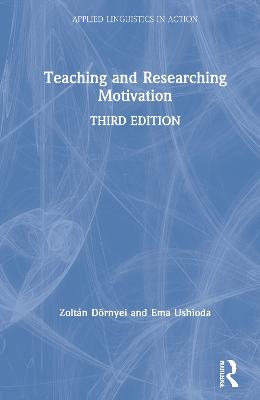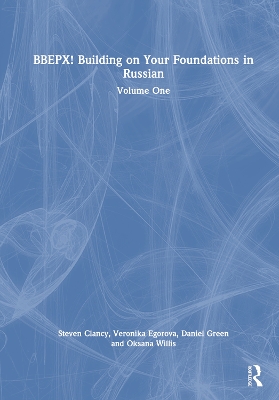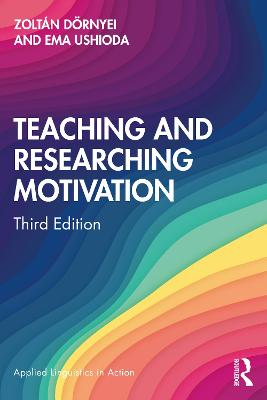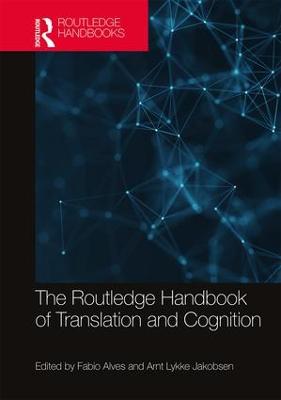Teaching and Researching Motivation
 -10%
portes grátis
-10%
portes grátis
Teaching and Researching Motivation
Ushioda, Ema; Doernyei, Zoltan
Taylor & Francis Ltd
04/2021
284
Dura
Inglês
9781138543454
15 a 20 dias
710
Descrição não disponível.
Introduction to the Third Edition
Part I What is motivation?
1. Exploring motivation: Changing perspectives
1.1 The complexity of motivation
1.2 Understanding L2 motivation in a changing, multifaceted world
1.3 The motivation to learn Global English versus other languages
2. Theories of motivation in psychology
2.1 Key cognitive theories of motivation
2.2 Motivation and its sociocultural context
3. Motivation to learn a foreign/second language: A historical overview
3.1 The social psychological beginnings
3.2 Accounting for cognitive theories and the classroom reality
3.3 Focus on time, context and vision
4. Current approaches in theorising L2 motivation
4.1 Motivational dynamics
4.2 Motivational currents and long-term motivation
4.3 Unconscious motivation
4.4 Motivation, multilingualism and languages other than English (LOTEs)
4.5 Other recent theoretical initiatives
4.6 'Small lens' approach and student engagement
Part II Motivation and language teaching
5. Motivation in practice: Strategies and approaches
5.1 From theory and research to classroom practice
5.2 A framework for motivational strategies
5.4 Promoting motivational self-regulation and learner autonomy
5.5 Generating and sustaining a vision for L2 learning
5.6 Engaging L2 learners
5.7 Frameworks for directed motivational currents
5.8 The motivational capacity of technology
5.9 Researching motivational strategies
6. Motivation in context: Demotivating influences
6.1 'Demotivation' versus 'motivation'
6.2 Research findings on L2 demotivation
6.3 The relevance of fixed and growth mindsets
6.4 Critical factors in the broader sociocultural context
7. Teacher motivation
7.1 Conceptualising the 'motivation to teach'
7.2 The motivation of L2 teachers
7.3 Teacher motivation and student motivation: Exploring their interplay
Part III Researching motivation
8. Making motivation a researchable concept
8.1 Inherent challenges of motivation research
8.2 Linear cause-effect relationships versus dynamic interdependence
8.3 Group versus individual-level measurement
8.4 Context-sensitive approaches to understanding motivation
8.5 Principles of designing L2 motivation studies
8.6 Motivation research and impact on society
8.7 How to make motivation research fruitful
9. Main types and methods of motivation research
9.1 Quantitative motivation studies
9.2 Qualitative motivation studies
9.3 Mixing methodologies
9.4 New directions in L2 motivation research
Part IV Resources and further information
10. The locus of motivation research: Linkages to other topics and disciplines
10.1 L2 motivation and related disciplines in the social sciences
10.2 The challenge of relating L2 motivation to applied linguistics and SLA
10.3 Defining target aspects of L2 communication
11. Sources and resources
11.1 Relevant journals and edited collections
11.2 Databases, citation indexes, Internet resources and discussion groups
11.3 Who's who in L2 motivation research?
11.4 Locating motivation measures and instruments
Subject index
Author index
Part I What is motivation?
1. Exploring motivation: Changing perspectives
1.1 The complexity of motivation
1.2 Understanding L2 motivation in a changing, multifaceted world
1.3 The motivation to learn Global English versus other languages
2. Theories of motivation in psychology
2.1 Key cognitive theories of motivation
2.2 Motivation and its sociocultural context
3. Motivation to learn a foreign/second language: A historical overview
3.1 The social psychological beginnings
3.2 Accounting for cognitive theories and the classroom reality
3.3 Focus on time, context and vision
4. Current approaches in theorising L2 motivation
4.1 Motivational dynamics
4.2 Motivational currents and long-term motivation
4.3 Unconscious motivation
4.4 Motivation, multilingualism and languages other than English (LOTEs)
4.5 Other recent theoretical initiatives
4.6 'Small lens' approach and student engagement
Part II Motivation and language teaching
5. Motivation in practice: Strategies and approaches
5.1 From theory and research to classroom practice
5.2 A framework for motivational strategies
5.4 Promoting motivational self-regulation and learner autonomy
5.5 Generating and sustaining a vision for L2 learning
5.6 Engaging L2 learners
5.7 Frameworks for directed motivational currents
5.8 The motivational capacity of technology
5.9 Researching motivational strategies
6. Motivation in context: Demotivating influences
6.1 'Demotivation' versus 'motivation'
6.2 Research findings on L2 demotivation
6.3 The relevance of fixed and growth mindsets
6.4 Critical factors in the broader sociocultural context
7. Teacher motivation
7.1 Conceptualising the 'motivation to teach'
7.2 The motivation of L2 teachers
7.3 Teacher motivation and student motivation: Exploring their interplay
Part III Researching motivation
8. Making motivation a researchable concept
8.1 Inherent challenges of motivation research
8.2 Linear cause-effect relationships versus dynamic interdependence
8.3 Group versus individual-level measurement
8.4 Context-sensitive approaches to understanding motivation
8.5 Principles of designing L2 motivation studies
8.6 Motivation research and impact on society
8.7 How to make motivation research fruitful
9. Main types and methods of motivation research
9.1 Quantitative motivation studies
9.2 Qualitative motivation studies
9.3 Mixing methodologies
9.4 New directions in L2 motivation research
Part IV Resources and further information
10. The locus of motivation research: Linkages to other topics and disciplines
10.1 L2 motivation and related disciplines in the social sciences
10.2 The challenge of relating L2 motivation to applied linguistics and SLA
10.3 Defining target aspects of L2 communication
11. Sources and resources
11.1 Relevant journals and edited collections
11.2 Databases, citation indexes, Internet resources and discussion groups
11.3 Who's who in L2 motivation research?
11.4 Locating motivation measures and instruments
Subject index
Author index
Este título pertence ao(s) assunto(s) indicados(s). Para ver outros títulos clique no assunto desejado.
L2 Motivation Research;L2 Motivation;Motivation in language learning;Language Learning Motivation;Second language acquisition;L2 Learning;Student Engagement;psycholinguistics;Language Learning;motivation research;L2 Motivation Theory;demotivation;L2 Motivation Scholar;cognitive linguistics;DMCs;sociolinguistics;Motivation theory;Future Self-image;Motivational interrelationships;Future Self-guides;Self-determination theory;SDT;Multiple Language Learning;Autonomy theory;Modern Language Journal;Goal Setting Theory;Teacher Motivation;SLA Research;Applied Linguistics;Japanese EFL Context;Professional Development;Modern Language;Coetzee Van Rooy;Growth Mindsets;Secondary School EFL Teacher
Introduction to the Third Edition
Part I What is motivation?
1. Exploring motivation: Changing perspectives
1.1 The complexity of motivation
1.2 Understanding L2 motivation in a changing, multifaceted world
1.3 The motivation to learn Global English versus other languages
2. Theories of motivation in psychology
2.1 Key cognitive theories of motivation
2.2 Motivation and its sociocultural context
3. Motivation to learn a foreign/second language: A historical overview
3.1 The social psychological beginnings
3.2 Accounting for cognitive theories and the classroom reality
3.3 Focus on time, context and vision
4. Current approaches in theorising L2 motivation
4.1 Motivational dynamics
4.2 Motivational currents and long-term motivation
4.3 Unconscious motivation
4.4 Motivation, multilingualism and languages other than English (LOTEs)
4.5 Other recent theoretical initiatives
4.6 'Small lens' approach and student engagement
Part II Motivation and language teaching
5. Motivation in practice: Strategies and approaches
5.1 From theory and research to classroom practice
5.2 A framework for motivational strategies
5.4 Promoting motivational self-regulation and learner autonomy
5.5 Generating and sustaining a vision for L2 learning
5.6 Engaging L2 learners
5.7 Frameworks for directed motivational currents
5.8 The motivational capacity of technology
5.9 Researching motivational strategies
6. Motivation in context: Demotivating influences
6.1 'Demotivation' versus 'motivation'
6.2 Research findings on L2 demotivation
6.3 The relevance of fixed and growth mindsets
6.4 Critical factors in the broader sociocultural context
7. Teacher motivation
7.1 Conceptualising the 'motivation to teach'
7.2 The motivation of L2 teachers
7.3 Teacher motivation and student motivation: Exploring their interplay
Part III Researching motivation
8. Making motivation a researchable concept
8.1 Inherent challenges of motivation research
8.2 Linear cause-effect relationships versus dynamic interdependence
8.3 Group versus individual-level measurement
8.4 Context-sensitive approaches to understanding motivation
8.5 Principles of designing L2 motivation studies
8.6 Motivation research and impact on society
8.7 How to make motivation research fruitful
9. Main types and methods of motivation research
9.1 Quantitative motivation studies
9.2 Qualitative motivation studies
9.3 Mixing methodologies
9.4 New directions in L2 motivation research
Part IV Resources and further information
10. The locus of motivation research: Linkages to other topics and disciplines
10.1 L2 motivation and related disciplines in the social sciences
10.2 The challenge of relating L2 motivation to applied linguistics and SLA
10.3 Defining target aspects of L2 communication
11. Sources and resources
11.1 Relevant journals and edited collections
11.2 Databases, citation indexes, Internet resources and discussion groups
11.3 Who's who in L2 motivation research?
11.4 Locating motivation measures and instruments
Subject index
Author index
Part I What is motivation?
1. Exploring motivation: Changing perspectives
1.1 The complexity of motivation
1.2 Understanding L2 motivation in a changing, multifaceted world
1.3 The motivation to learn Global English versus other languages
2. Theories of motivation in psychology
2.1 Key cognitive theories of motivation
2.2 Motivation and its sociocultural context
3. Motivation to learn a foreign/second language: A historical overview
3.1 The social psychological beginnings
3.2 Accounting for cognitive theories and the classroom reality
3.3 Focus on time, context and vision
4. Current approaches in theorising L2 motivation
4.1 Motivational dynamics
4.2 Motivational currents and long-term motivation
4.3 Unconscious motivation
4.4 Motivation, multilingualism and languages other than English (LOTEs)
4.5 Other recent theoretical initiatives
4.6 'Small lens' approach and student engagement
Part II Motivation and language teaching
5. Motivation in practice: Strategies and approaches
5.1 From theory and research to classroom practice
5.2 A framework for motivational strategies
5.4 Promoting motivational self-regulation and learner autonomy
5.5 Generating and sustaining a vision for L2 learning
5.6 Engaging L2 learners
5.7 Frameworks for directed motivational currents
5.8 The motivational capacity of technology
5.9 Researching motivational strategies
6. Motivation in context: Demotivating influences
6.1 'Demotivation' versus 'motivation'
6.2 Research findings on L2 demotivation
6.3 The relevance of fixed and growth mindsets
6.4 Critical factors in the broader sociocultural context
7. Teacher motivation
7.1 Conceptualising the 'motivation to teach'
7.2 The motivation of L2 teachers
7.3 Teacher motivation and student motivation: Exploring their interplay
Part III Researching motivation
8. Making motivation a researchable concept
8.1 Inherent challenges of motivation research
8.2 Linear cause-effect relationships versus dynamic interdependence
8.3 Group versus individual-level measurement
8.4 Context-sensitive approaches to understanding motivation
8.5 Principles of designing L2 motivation studies
8.6 Motivation research and impact on society
8.7 How to make motivation research fruitful
9. Main types and methods of motivation research
9.1 Quantitative motivation studies
9.2 Qualitative motivation studies
9.3 Mixing methodologies
9.4 New directions in L2 motivation research
Part IV Resources and further information
10. The locus of motivation research: Linkages to other topics and disciplines
10.1 L2 motivation and related disciplines in the social sciences
10.2 The challenge of relating L2 motivation to applied linguistics and SLA
10.3 Defining target aspects of L2 communication
11. Sources and resources
11.1 Relevant journals and edited collections
11.2 Databases, citation indexes, Internet resources and discussion groups
11.3 Who's who in L2 motivation research?
11.4 Locating motivation measures and instruments
Subject index
Author index
Este título pertence ao(s) assunto(s) indicados(s). Para ver outros títulos clique no assunto desejado.
L2 Motivation Research;L2 Motivation;Motivation in language learning;Language Learning Motivation;Second language acquisition;L2 Learning;Student Engagement;psycholinguistics;Language Learning;motivation research;L2 Motivation Theory;demotivation;L2 Motivation Scholar;cognitive linguistics;DMCs;sociolinguistics;Motivation theory;Future Self-image;Motivational interrelationships;Future Self-guides;Self-determination theory;SDT;Multiple Language Learning;Autonomy theory;Modern Language Journal;Goal Setting Theory;Teacher Motivation;SLA Research;Applied Linguistics;Japanese EFL Context;Professional Development;Modern Language;Coetzee Van Rooy;Growth Mindsets;Secondary School EFL Teacher







